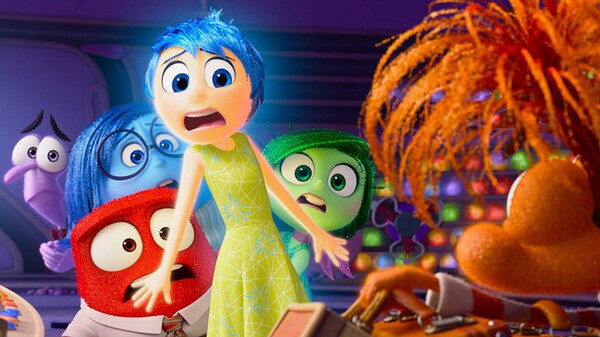Children and parents together at the cinema to understand emotions
Riley is a young girl who passes a very tranquil childhood in Minnesota
with her parents. Her life is rich with friends and family. When Riley
turns 11, however, something unexpected happens which threatens her
happiness: due to her father’s work, the whole family is forced to move to
San Francisco. Besides leaving her childhood home, she must switch schools
leaving dear friends and beloved places, adapting to a new environment.
All this is not an easy transition for Riley, and thus, an interior battle
of emotions ensues.
Just so, Inside Out begins, a 2015 Walt Disney Pixar animation
film, directed by Peter Docter, also known for other popular films such as Up. Extremely successful, Inside Out is not only the
fruit of its author’s imagination but also of accurate data on the study of
emotions and their effect on human action. In fact, the main characters of
the story each represent a different emotion: Joy, Sadness, Fear, Anger,
Disgust.
As such, it’s little surprise the film has aroused great interest and
continues to do so. The scope of the passions and emotions have always
fascinated, intrigued and even scared the human person, feeling at times a
sense of powerlessness when faced by these seemingly uncontrollable forces.
Over the centuries, the mysterious world of the passions has captivated and
challenged philosophers, poets and men of science. It’s enough to point to
ancient Greece in which great philosophers, such as Aristotle, and writers,
such as Aeschylus, Sophocles, Euripides, were already agonizing over the
human passions and emotions.
In short, Inside Out tackles “complex” and “ancient” arguments, as
“complex” and “antique” as human beings themselves. It does so, however, in
an original and engaging way: the emotions, in fact, taking shape as
animated characters, each one with its own importance and role to play. How
the emotions dialogue and discuss among themselves in the film is
particularly entertaining, as well as how they fight and impose on one
another.
The main conflict in the story is between Joy and Sadness. Joy would like
to hide Riley’s sufferings, wanting to prevent the girl and whoever else is
around her to notice them. Hoping to protect her, Joy would like to remove
sadness from Riley’s life completely. In the attempt to “expel” sadness,
however, Joy is cast out as well, implying that one cannot exist without
the shadow of the other. Riley, deprived of both joy and sadness, remains
at the mercy of anger, disgust, fear, the catastrophic consequences of
which are easy enough to imagine.
Meanwhile, Joy and Sadness are undergoing a “return journey,” an arduous
path. At times funny, at times touching, their restoration is necessary for
little Riley to return to a state of health. The film seems to convey that
the upbringing, maturation, and equilibrium of a person depends partly on
their capacity to process sorrow, as opposed to bury it, whether it be
pain, disgust, fear.
In this regard, how the film depicts the family is both touching and
beautiful: a family that, despite inevitable failings, problems and moments
of loss, can turn those very same moments into sharing and dialogue. A
family that knows how to build and enhance relationships, as well as how to
affront difficulties. A family which can remain united through both laughs
and tears. Even when suffering ensues, the family offers a place of
rediscovery and comfort, rather than loneliness and despair.
Finally, the film manifests the uselessness of obstinate self-closure,
instead promoting values of solidarity and confrontation. Suitable for both
young and old, Inside Out provides both entertainment and points
of reflection. To a certain degree, it is even counter cultural, living in
a society that encourages self-sufficiency and individualism. While society
says block out suffering, Inside Out instead demonstrates the
value and necessity of it in human life and happiness.














